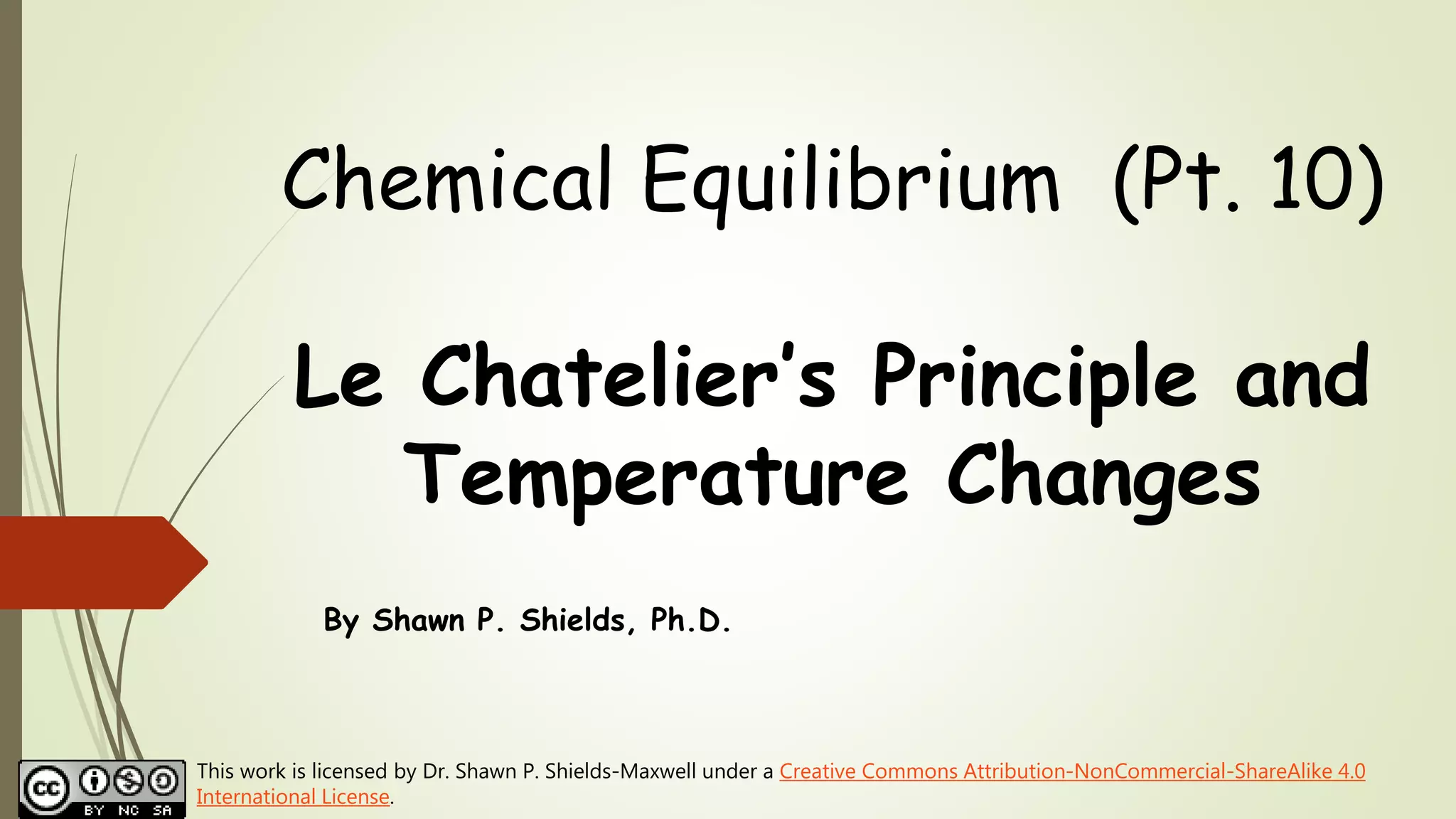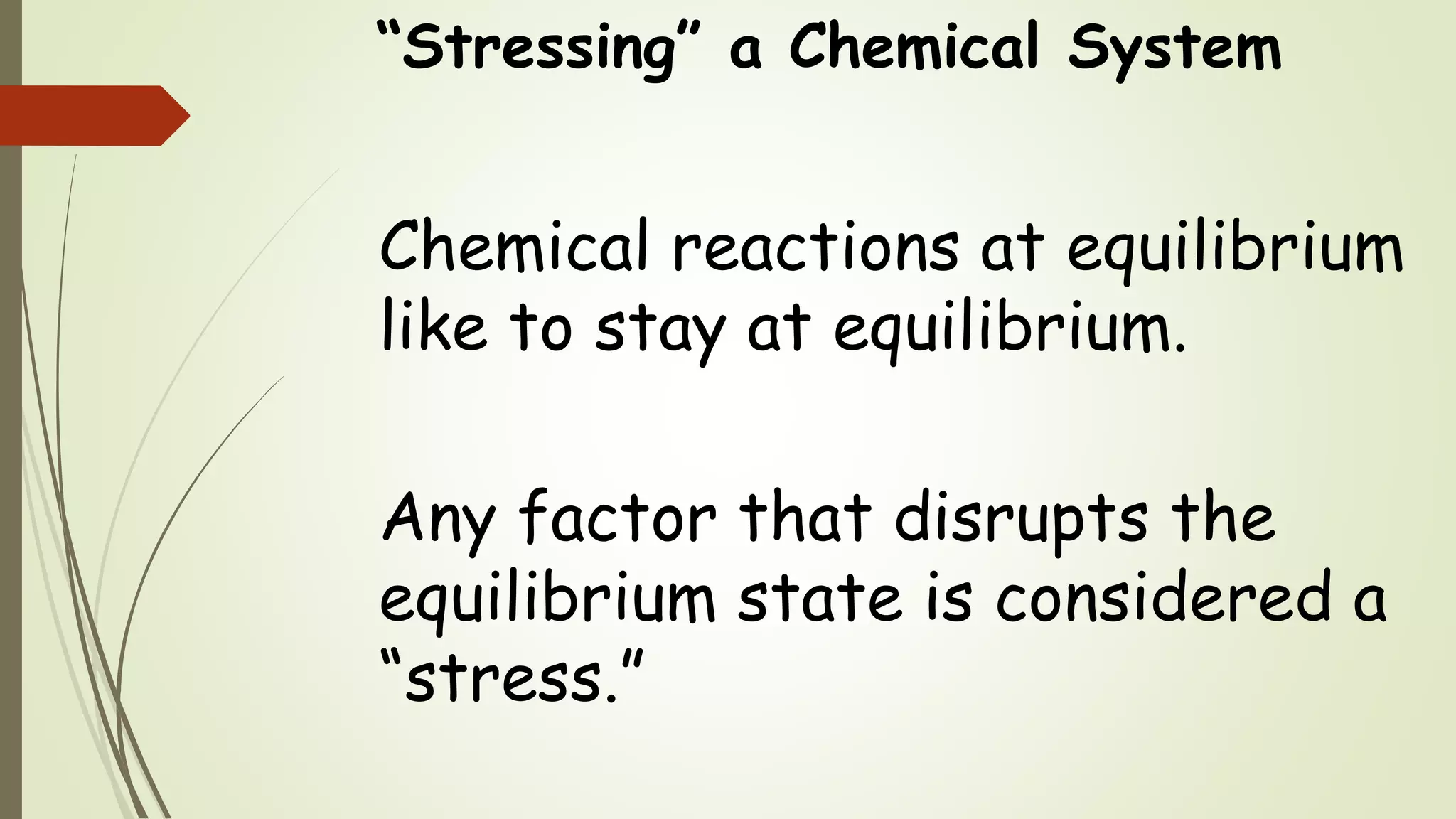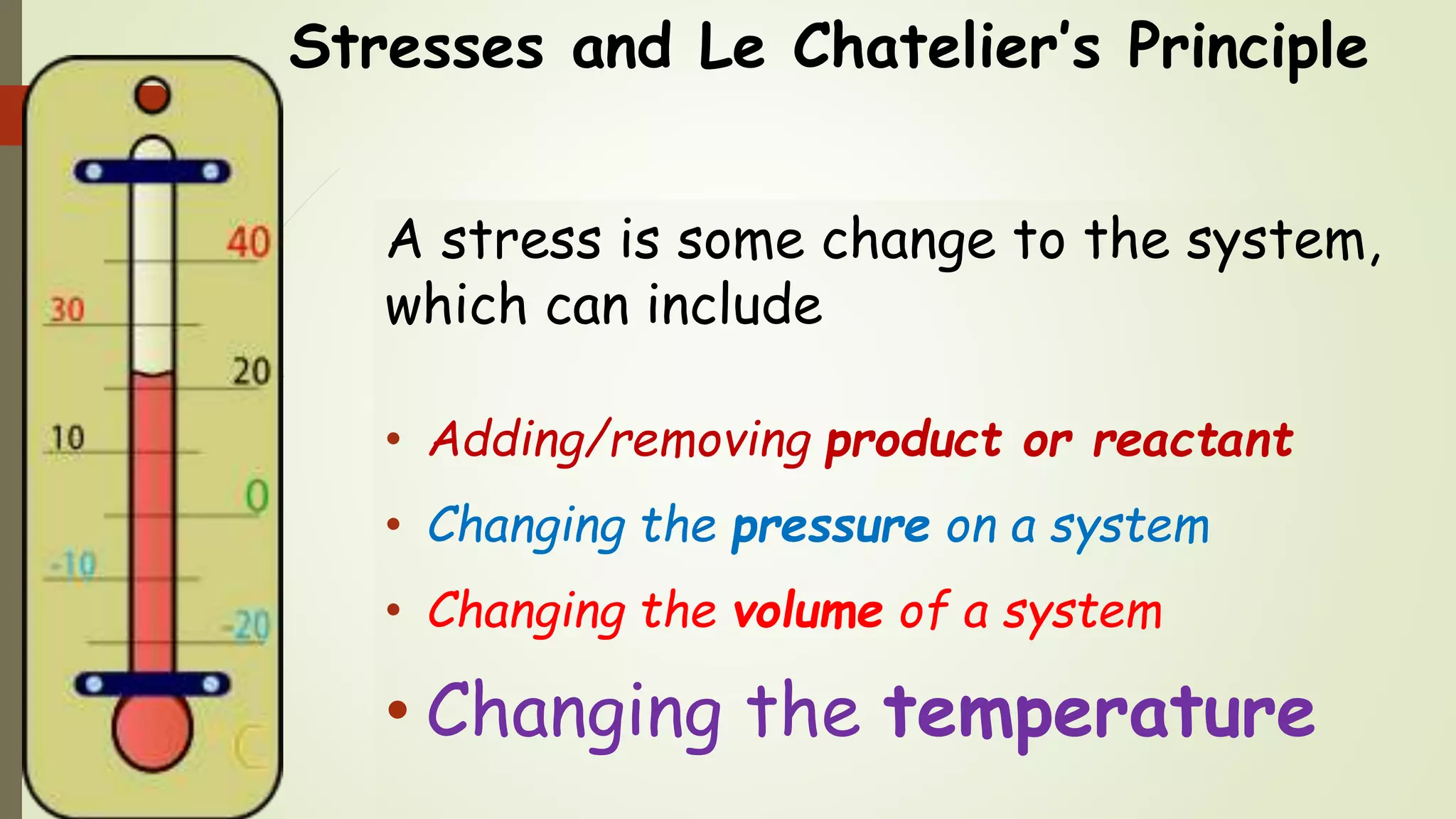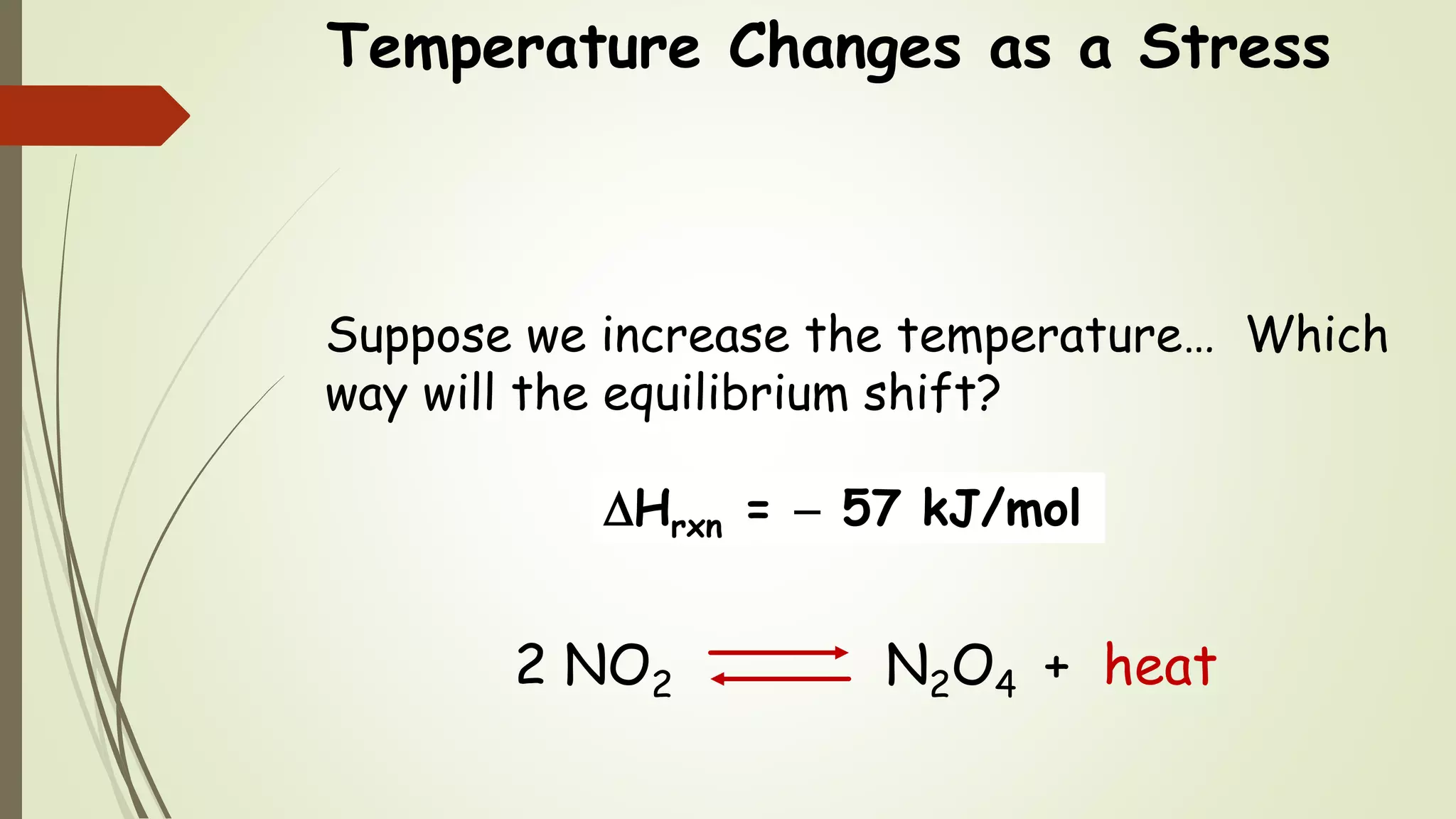This document discusses how temperature changes act as a stress on chemical equilibriums according to Le Chatelier's principle. It explains that increasing the temperature of an endothermic reaction shifts the equilibrium toward reactants, while decreasing the temperature shifts it toward products. For exothermic reactions, increasing the temperature shifts the equilibrium toward products, while decreasing the temperature shifts it toward reactants. This is because temperature changes are adding or removing heat, which acts as a reactant in endothermic reactions and a product in exothermic reactions.













